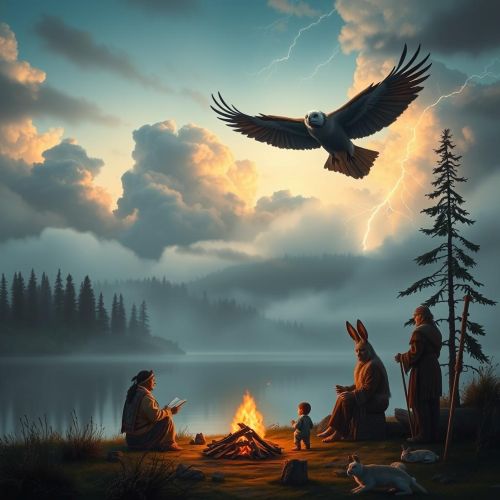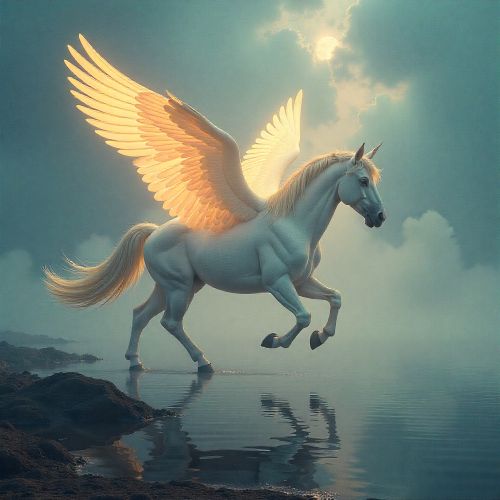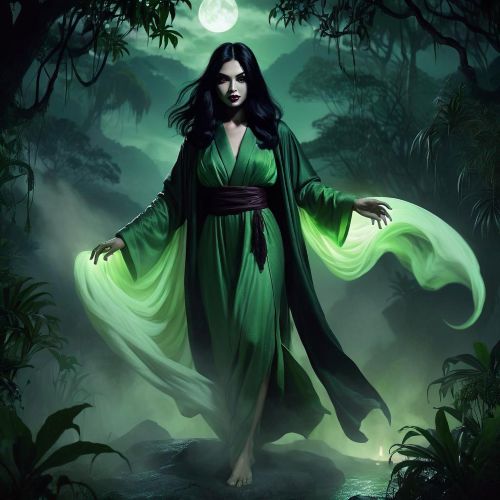
Anishinaabe: Mythology and the First Nations of Canada
The Anishinaabe are one of the most culturally and spiritually rich Indigenous groups in Canada, deeply rooted in tradition, storytelling, and mythology. The term Anishinaabe, often translated as “original people” or “first people,” refers to a collective of culturally related Indigenous nations whose traditional territories stretch across the Great Lakes region of Canada and the northern United States. Their mythology, passed down orally over generations, is a vital part of their cultural heritage and includes a complex pantheon of spirits, cultural heroes, and moral lessons woven into tales of creation, survival, and harmony with nature.
In this article, we explore the diverse nations that make up the Anishinaabe peoples, highlight some of their shared mythological figures, and examine the central role these stories play in their identity and worldview.
The Anishinaabe Peoples
The Anishinaabe are not a single tribe, but a broad alliance of culturally and linguistically related groups who share a common Algonquian language root and spiritual worldview. Major groups considered part of the Anishinaabe include:
-
Ojibwe (Chippewa)
-
Odawa (Ottawa)
-
Potawatomi
-
Algonquin
-
Mississaugas
-
Saulteaux
-
Nipissing
These nations often describe themselves as part of the Three Fires Confederacy, a longstanding alliance between the Ojibwe, Odawa, and Potawatomi. In this spiritual and political triad, the Ojibwe are known as the keepers of medicine, the Odawa as the traders, and the Potawatomi as the keepers of the fire. Though each group has its own customs and dialects, they share many core stories, beliefs, and ceremonial practices that define Anishinaabe mythology.
Key Figures in Anishinaabe Mythology
Anishinaabe mythology is deeply connected to nature, spirit beings, and moral teachings. It is rich with characters that embody cultural values, explain natural phenomena, and guide behavior.
Nanabozho (or Wenabozho)
One of the most important and beloved figures in Anishinaabe mythology is Nanabozho, a trickster and culture hero. Often taking the form of a giant rabbit or a human-animal hybrid, Nanabozho is credited with shaping the world, teaching humans how to live, and even bringing fire and medicine to the people. His stories are both humorous and instructive, illustrating the consequences of pride, greed, and disrespect for nature.
Gitche Manitou
Gitche Manitou, or the Great Spirit, is considered the supreme being in Anishinaabe cosmology. This all-powerful and benevolent spirit created the world and all life within it. Rather than being portrayed as an anthropomorphic god, Gitche Manitou is understood as an omnipresent spiritual force that resides in everything—earth, sky, water, and all living beings.
Thunderbirds
Thunderbirds are powerful spirit beings that control the skies and bring thunderstorms. They are both protectors and punishers, often depicted in legends as guardians of morality and justice. In some stories, Thunderbirds combat underwater monsters that threaten the balance of the natural world.
Mishipeshu (The Great Lynx)
This mythical water creature, often described as a serpent-like lynx, rules the waters and is associated with the dangers of lakes and rivers. Mishipeshu is a symbol of both power and caution, reminding people of the need to respect nature and its hidden forces.
Mythology as a Moral Compass
Anishinaabe stories are not just folklore—they are spiritual teachings encoded in myth. Elders and storytellers use mythology to pass down lessons about respect, humility, honesty, and community responsibility. Children are taught these values through stories of Nanabozho’s mischief, the warnings of the Thunderbird, or the kindness shown by animals who sacrificed for the people.
Each story is a piece of a broader worldview in which humans are not above nature but part of a sacred circle. The Anishinaabe Seven Grandfather Teachings—wisdom, love, respect, bravery, honesty, humility, and truth—are moral pillars often illustrated through these myths.
The Importance of Oral Tradition
The Anishinaabe rely on oral storytelling to preserve their mythology, history, and cultural identity. Unlike written texts, oral traditions are dynamic and adapt to the times, ensuring that their teachings remain relevant for each new generation. Storytelling events, ceremonies, and seasonal gatherings are integral to keeping this tradition alive.
Many stories are tied to the land itself, with specific lakes, rivers, and forests serving as sacred landmarks in their mythology. These sacred spaces not only serve as storytelling backdrops but also reinforce the Anishinaabe people’s connection to their ancestral territories.
Anishinaabe Mythology Today
Despite the challenges of colonization and cultural suppression, Anishinaabe mythology remains a vibrant part of Indigenous identity in Canada today. Many Indigenous artists, authors, and educators are working to reclaim and celebrate these stories through books, visual arts, music, and film. Mythological figures like Nanabozho and the Thunderbird appear in everything from children’s literature to video games and public murals.
Efforts to revitalize Indigenous languages have also strengthened the transmission of mythological knowledge. Since language and story are deeply intertwined, preserving Anishinaabemowin (the Anishinaabe language) is crucial to sustaining the spiritual essence of their mythology.
Conclusion
The Anishinaabe are not just a group of interconnected First Nations—they are the stewards of a living mythology that continues to shape their worldview and identity. From the creation stories of Gitche Manitou to the adventures of Nanabozho and the awe-inspiring Thunderbirds, Anishinaabe mythology is a profound testament to the power of storytelling, resilience, and spiritual connection to the land.
As Canada continues its journey toward truth and reconciliation, understanding and honoring Anishinaabe mythology is an important step in appreciating the depth and beauty of Indigenous culture.
No posts were found.







